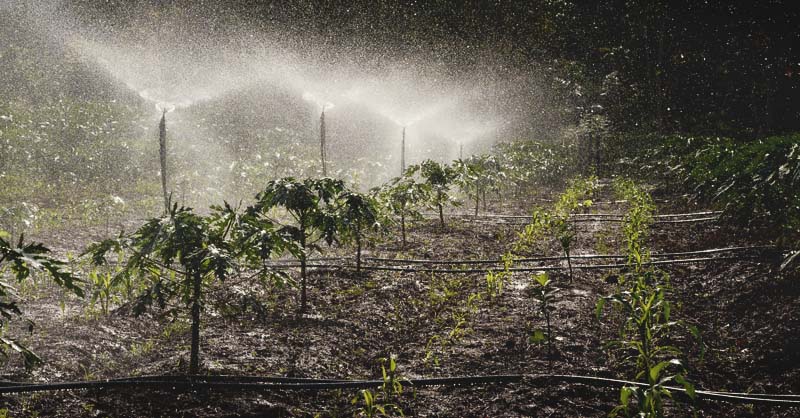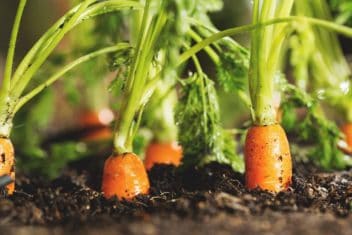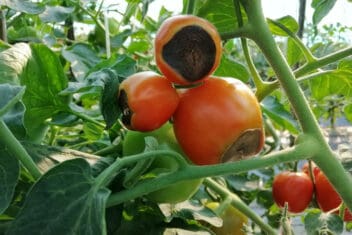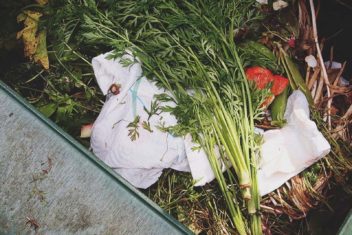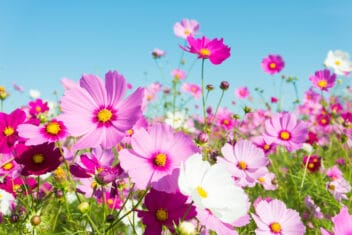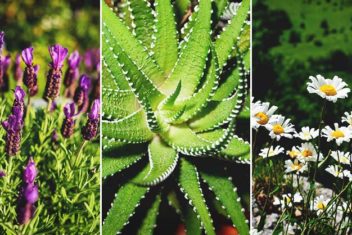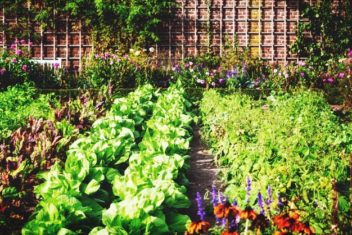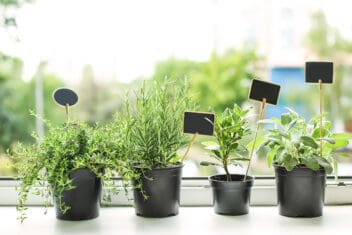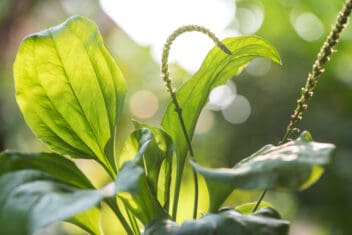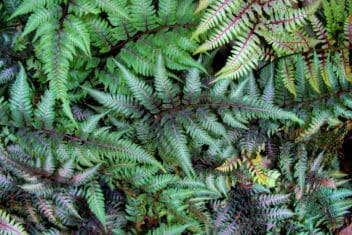Watering your garden or lawn can be quite a chore. You might want to understand the different irrigation options, to pick the one best suited to your homestead.
Once you dive into each irrigation choice and understand how you can make some options less expensive, you can lighten your load.
I’m going to walk you through spray irrigation. I’ll explain what it is, how it works, and what the pros and cons of this style of irrigation system are.
Here’s what you should know about spray irrigation before investing in any type of irrigation system for your lawn or garden:
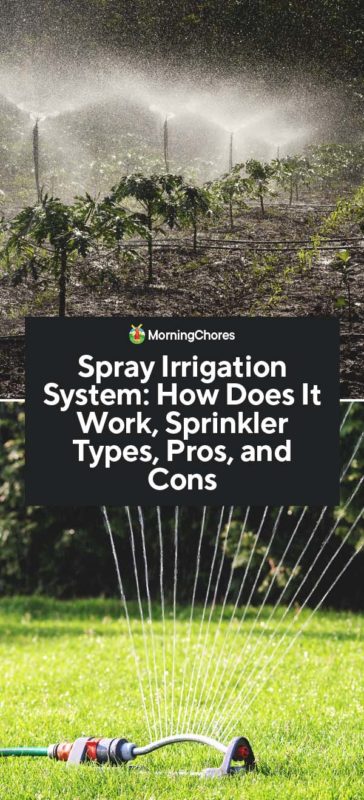
What is Spray Irrigation?
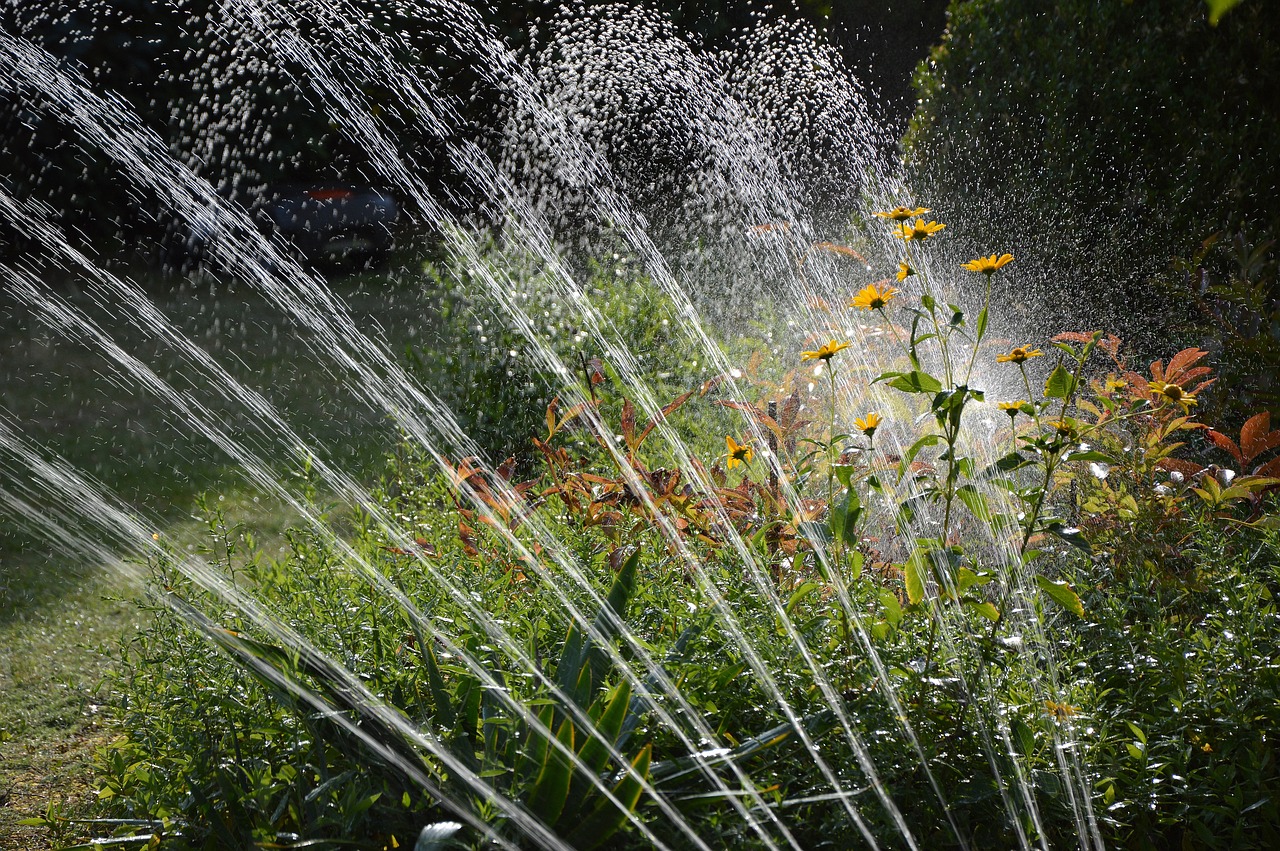
If you use sprinklers to water your lawn or garden, you’re using spray irrigation. This is a style of watering that mimics rainfall.
Spray irrigation is also known as sprinkler irrigation. There are a few different options for this style of system. The most common are:
- Using a water hose to spray the area in need of watering. This is obviously labor-intensive if you have a large garden.
- Sprinkler systems are another option for watering larger areas without requiring as much labor on your part.
- Center pivot systems are used in larger agricultural set-ups. They have a metal frame on wheels which is powered by a motor. The contraption is moved around the field to water crops via a large sprinkler in the center which sprays water from side to side.
- Lateral move irrigation is a large-scale watering system that moves water via a huge sprinkler around a rectangular shaped field in a straight line.
These are all valid options for a spray or sprinkler irrigation system. Knowing your options is important to make sure you choose the right setup for your needs.
How Does Spray Irrigation Work?
Whether you choose a large spray irrigation system or a smaller system, they all work basically the same.
Spray irrigation applies water like rain over the designated area. Water will run through a hose or pipe from the water source. Most use a spigot, but if you have a larger water source, it may require a pump to get the water to the pipe or hose and through it.
Once the water in the pipe reaches the sprinkler, the flow of the water will be interrupted by the mechanical action of the sprinkler.
This mechanical action not only breaks up the water into droplets but also force it into the air where gravity will do its job and bring the droplets back down to the plants and soil surrounding the plants.
Sprinkler System Options
Sprinkler systems are obviously one of the most common choices for a spray irrigation system. Yet, there are multiple options for a sprinkler set-up.
Here’s what you should know when choosing a sprinkler system to water your lawn or garden:
1. Overhead Sprinklers
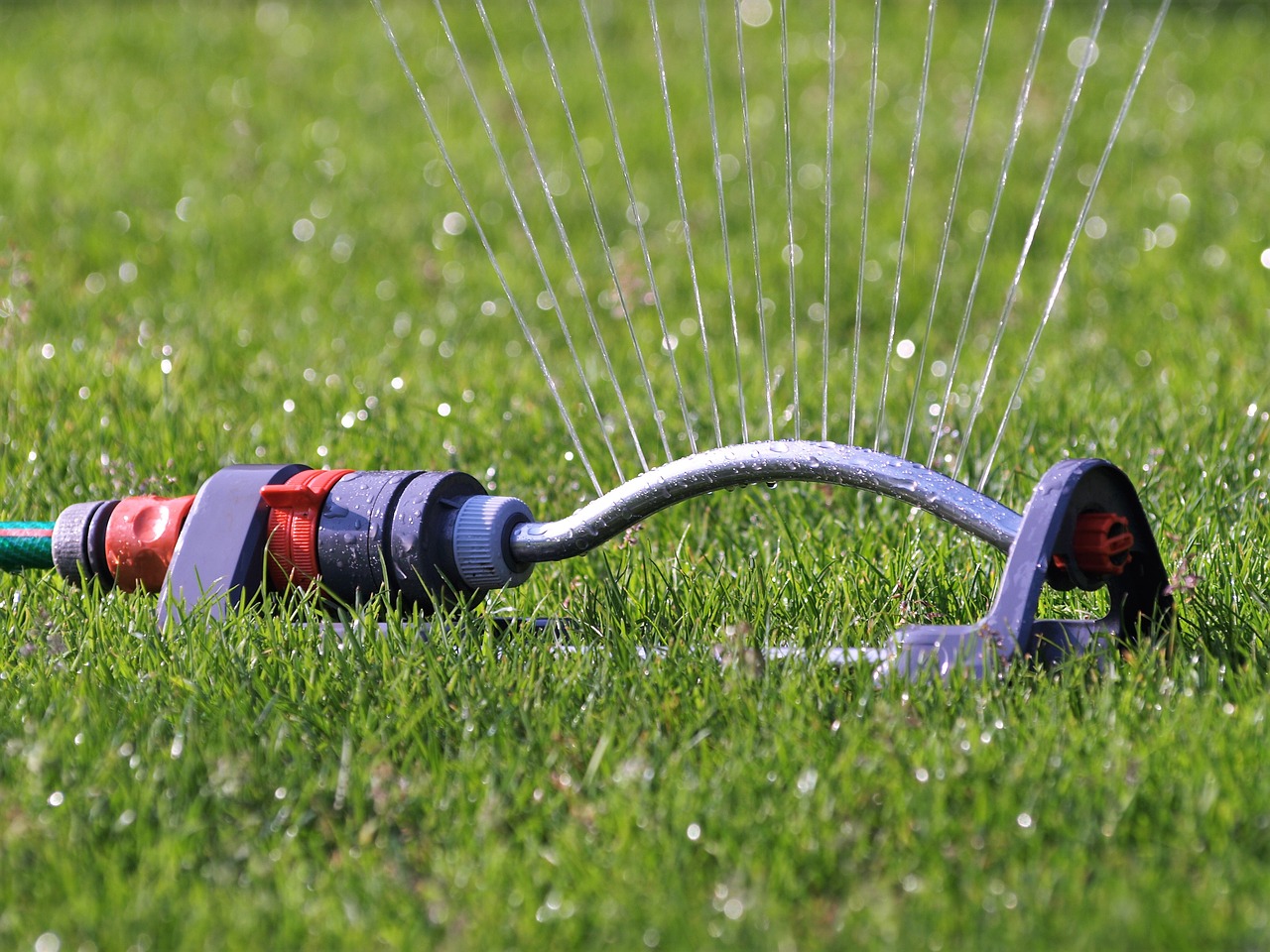
Overhead sprinklers rotate back and forth and form a water arc. Depending on the pressure in the hose, they can water a sizeable area but have to be moved around the yard as needed.
This style of sprinkler does well to water smaller yards or can be paired up to water larger lawns and bigger gardens. They are also very popular among kids and pets and can lead to a number of entertaining Youtube videos.
2. Rotor Sprinkler Systems
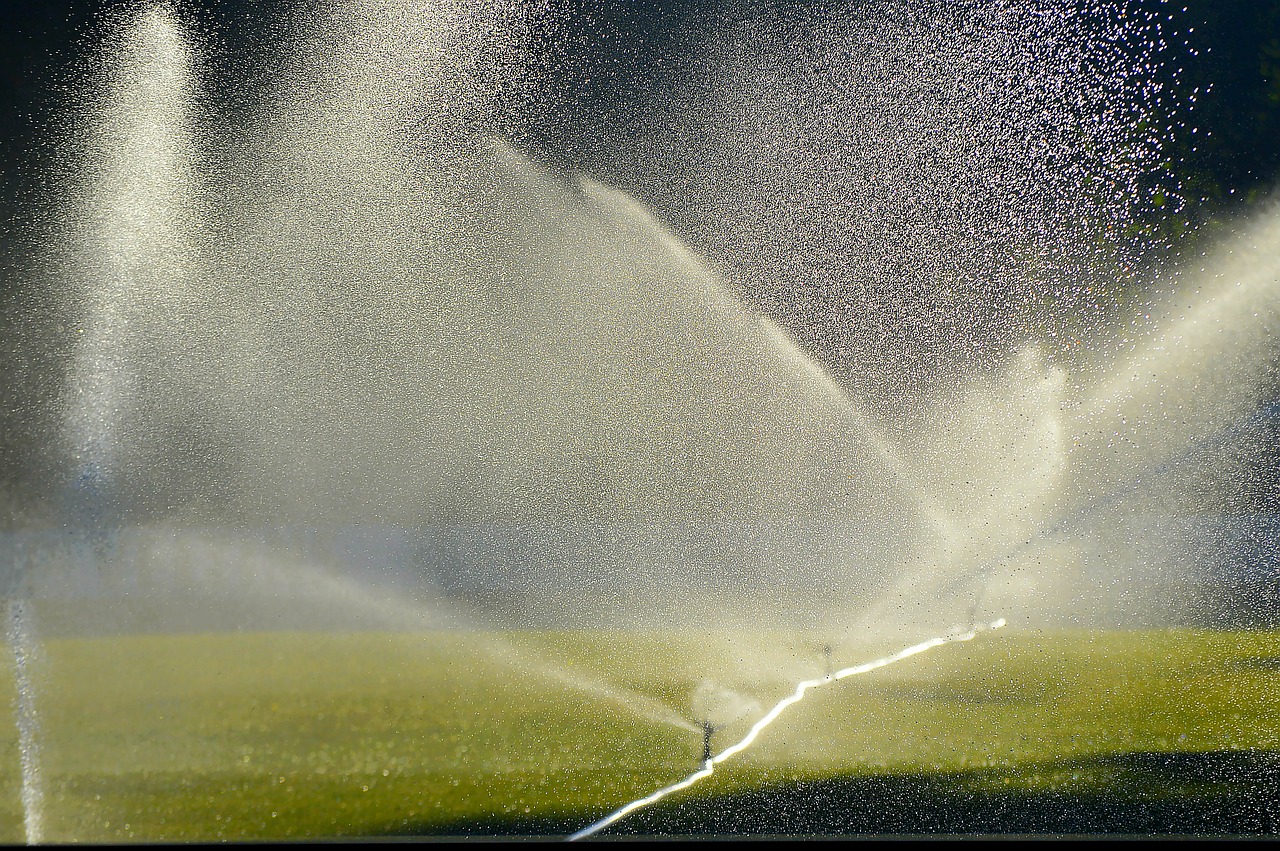
Rotor sprinklers are the sprinkler systems where they can either pop-up out of the ground or sit on top of the ground.
They rotate in a circle to water a large area. They must be adequately designed to be effective, but they’re an inexpensive option for watering. If designed and set up correctly, they make for effortless watering when coupled with a sprinkler controller.
3. Fogger Sprinkler Systems
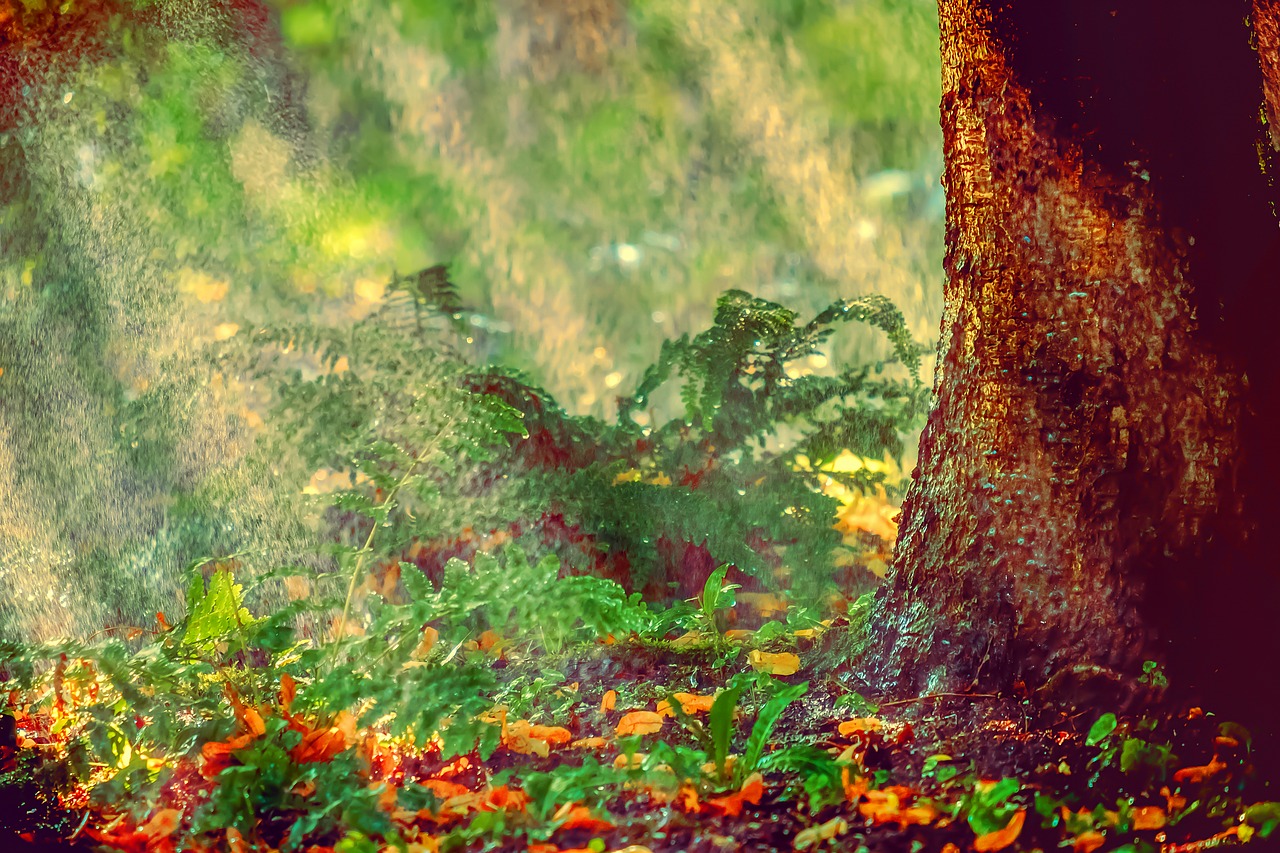
If you don’t want large amounts of water flying across your yard or garden, you could choose a gentler watering option.
Fogger sprinklers break the water down to a point it produces more of a mist. This is a great option if you’re concerned about the water beating your plants down and love the gentle mistiness of this plant-friendly sprinkler system.
4. Jet Sprinkler Systems
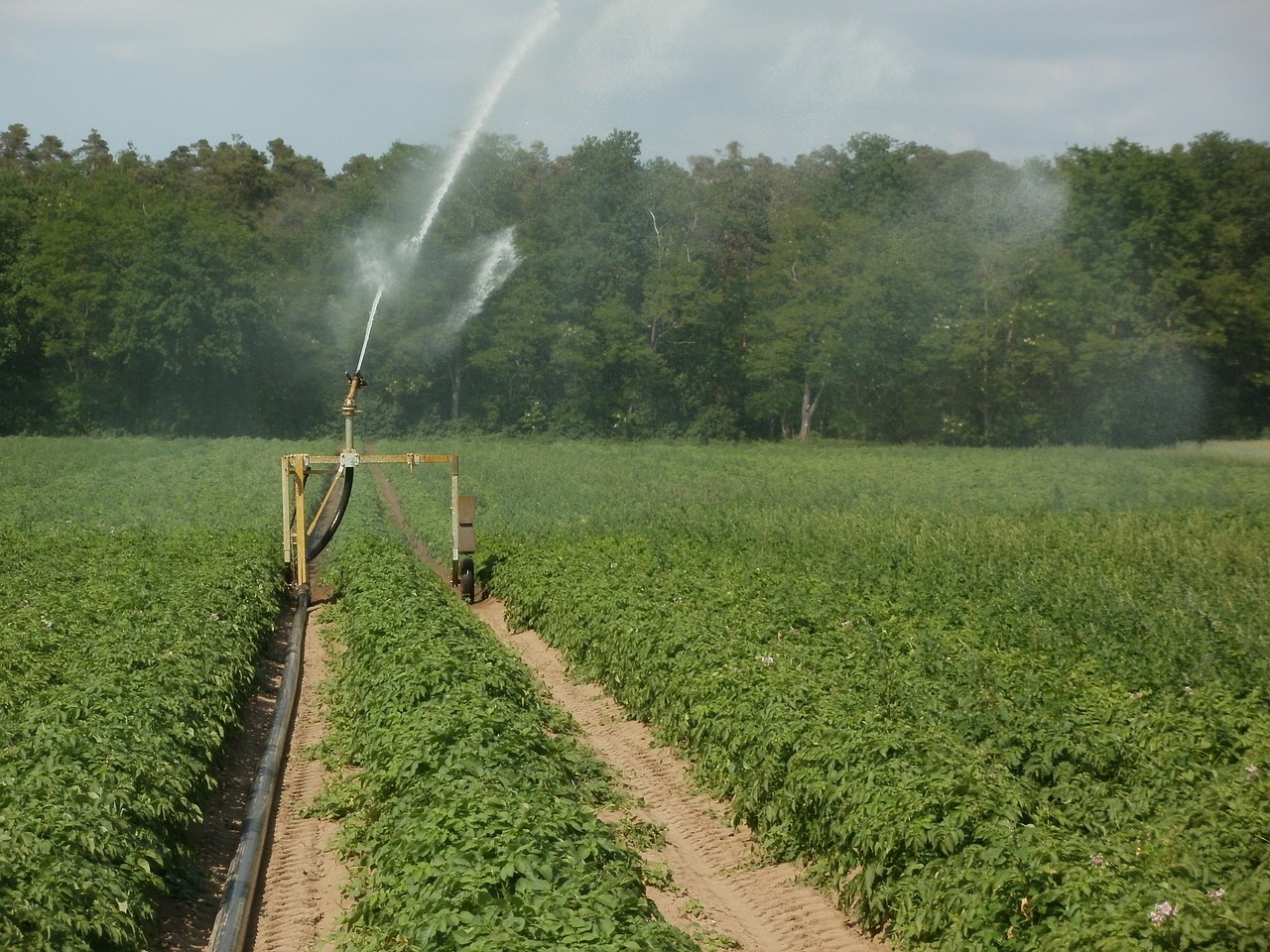
Jet sprinkler systems put water out with more force than some of the other options mentioned previously.
This would be a great option if you must water huge surfaces. It would work well for large garden layouts or for large yards.
The Pros to Spray Irrigation
Choosing an irrigation system can be a big decision. They require some planning and a financial investment too.
Therefore, you must understand the good and the bad before diving in. Here are the positive qualities of a spray irrigation system:
1. Can Handle a Big Area
If you have a large area that needs watering, spray irrigation is the best solution. I’ve mentioned this many times in this post because watering large areas can prove difficult.
Place a few sprinklers out in the area, and they should be able to handle the task without issue. I use rotor irrigation to water my larger garden, and it does a great job.
2. Set It and Forget It
If you’re busy and want to take your lawn or garden off your to-do list, spray irrigation is for you. This type of set-up can be attached to a timer.
The timer will know when to turn off and on. You don’t even have to remember to water anymore. The system will do everything for you.
3. Many Choices in Styles
You may not be a big fan of an overhead sprinkler, but maybe you like the rotor sprinkler option. The great news is, you have many options when it comes to choosing the spray irrigation system.
We’ve discussed them above, but there’s an option for the amount of water you’d like output, the size of the area you’re considering watering, and there are systems to suit every budget.
4. More Water Equates to Less Watering
Some people don’t like spray irrigation because it uses more water than other irrigation options. However, there is a silver lining to the amount of water used.
When you use spray irrigation to water your crops, it uses plenty of water to get the job done. However, the plus side is that you can water less frequently.
5. Save Some Green
As I mentioned above, spray irrigation has a system that will work for practically any budget. You can spend a good deal of money and have a rotor system designed and installed for you.
However, you can also head to your local big-box store and purchase a few overhead sprinklers. Attach them to a garden hose and place them in your yard for much less of an investment, and more entertainment.
The Drawbacks to Spray Irrigation
As with everything in life, there are drawbacks when you choose spray irrigation too. Here’s what you should consider before choosing this style of irrigation:
1. Wet Foliage
When you water your plants from overhead, the foliage of the plant becomes wet. Where you have wet foliage, you create potential problems.
If your plants don’t have enough room to breathe, it could allow your crops to develop fungus. This could damage your harvest over time.
2. More Weeds
Other irrigation options allow the water to go directly to the roots of the crops. Spray irrigation doesn’t do this.
Instead, it waters an entire area. This is a problem because when watering your plants, it’s also watering your weeds. This could increase the number of weeds produced in your garden.
3. Intense Watering
Depending upon the style of sprinkler you choose for spray irrigation, the force of the water could be high when applied to your crops.
This could cause run-off to occur in your garden which will wash nutrients from the soil. Evaporation also occurs with spray irrigation which makes it less efficient than for example, drip irrigation.
If you were feeling uncertain about which irrigation system you should choose to care for your lawn or garden this year, it’s our hope this information helps you to make a more informed decision.
Spray irrigation is one of the most commonly used types of irrigation systems with today’s gardeners. Depending upon your needs, it could work for you as well.
